One of the most colorful figures of the Chicano Movement of the late 60s and early 70s was Oscar Zeta Acosta, a.k.a. the Brown Buffalo. A radical, hard-living lawyer and activist, Acosta helped lead the East L.A. school walkouts in 1968, successfully argued or brought attention to the court cases of many defendants associated with Movement actions, and even ran for sheriff of L.A. County in 1970, representing the La Raza Unida party—he lost but did come in second, receiving over 100,000 votes for his cause of dismantling and reorganizing the sheriff’s department. Nowadays Acosta is better known to counterculture fans as Hunter S. Thompson’s sidekick in Fear and Loathing in Las Vegas (1971), fictionalized as Dr. Gonzo in what is acknowledged by all involved to be a fairly accurate portrayal of their drug-crazed trip to Vegas for a journalistic assignment. Feeling that he should have gotten more than sidekick credit for his contributions to Thompson’s trademark style, Acosta got his own deal from Thompson’s publishers and wrote two fiery, highly recommended books: The Autobiography of a Brown Buffalo (1972), about his youth and political awakening, and The Revolt of the Cockroach People (1973), about his involvement with the Chicano Movement in Los Angeles. He disappeared during what was probably a drug run to Mazatlán in 1974 and has not been heard from since. Acosta has been portrayed on the big and small screen, by Benicio del Toro in Terry Gilliam’s hallucinatory adaptation of Fear and Loathing in Las Vegas (1998), and also in a vibrant new documentary by Philip Rodriguez for PBS, The Rise and Fall of the Brown Buffalo (2018), which you can watch on LAPL’s streaming movie service Kanopy.
Acosta grew up on his family’s tiny farm in Riverbank, a rural community near Modesto that he recalls being segregated between Mexicans, Americans, and ‘Okies’. His father encouraged competitiveness, as he wrote in an essay quoted by Ilan Stevens in his Acosta biography, Bandido:
“He wanted me to compete more than anything else so he pushed me into competition with himself. When I was five he encouraged me to argue and fight with him... I guess that is where I became as nasty as I am.”
Oscar was also required to fully assimilate: work hard, stay in school, and speak only English, which explains his poor command of Spanish later in life. Some incidents from this time shed light on his future volatility. He developed crushes on a few white girls at his school, one of whom told the class that he ‘stank’, and most of whose fathers forbade him to date them. For his graduation rehearsal from Riverbank Grammar School, he recalls being lined up two by two; the teacher then went back and not-so-subtly rearranged the students so that there were no interracial pairs. Acosta and his friends protested, but their parents made them march in the rearranged order. All of this helped awaken his consciousness of race, expressed one day while walking down the street with his friends when he spontaneously spat on a pamphlet with a picture of the American flag. His friends insisted on fighting him. “As things turned out, I had to fight each of them that afternoon. I lost every single fight… I’ve been an outlaw out of practical necessity ever since. And I have never backed off from a fight.”
He learned clarinet and got a music scholarship to USC, but did not wind up attending. Instead, he joined the Air Force, where he played in the band. While stationed in Panama, he found Jesus and became a kind of missionary, building his own homemade church near the base and baptizing the locals; when he returned to the States, he lost the faith and fell back into his rowdy hard-drinking ways. In 1956 he married Betty Daves, an occupational therapist at a hospital in Modesto, and started working his way through Modesto Junior College. They had a son, Marcos, and eventually separated but stayed on good terms.
Acosta was plagued by mood swings and insecurities, for which he saw a therapist, as well as his obesity and ulcers. Autobiography opens at this point in his life after he has passed the bar exam and is working as an anti-poverty attorney for the East Oakland Legal Aid Society. One day the stress of the job crashes over him, he quits on the spot, walks out the door, and hits the road. He boozes his way through wild days and nights with bikers, hitchhiking hippies, and drug dealers (the reader should be warned of his use of racial epithets often found in counterculture writing of the time, as well as his accounts of womanizing and bad behavior), driving around the country from Ernest Hemingway’s grave in Sun Valley, Idaho to the Daisy Duck bar in Aspen, Colorado, where he befriends Hunter S. Thompson. Eventually, he hits bottom in Juarez, and then talks on a payphone in El Paso with his brother Bob, who helps guide his future direction:
“‘Look, if you want to write about revolutions… have you ever heard of Brown Power?... the Chicanos down in East L.A. I read a little paper called La Raza… I read that they’re going to start a riot. Some group called the Brown Berets or something are going to have a school strike…’ The bomb explodes in my head. Flashes of lightning. Stars in my eyes. I see it all before me. This is exactly what the gods have in store for me… I thank him, I praise him and I beg him to send me fifty bucks immediately. I will take the Greyhound to Los Angeles, call my cousin Manuel and have him put me up for a few days… God damn, why didn’t I think of that?”
The conclusion of Autobiography explains his new identity:
"Now what we need is, first to give ourselves a new name… So I propose that we call ourselves… the Brown Buffalo people… Yes, the animal that everyone slaughtered… Sure, both the cowboys and the Indians are out to get him… and because we do have roots in our Mexican past, our Aztec ancestry, that’s where we get the brown from… "
Around this time he added ‘Zeta’ to his name, attributing it to the character of General Zeta in a 1959 movie about the Mexican Revolution, La Cucaracha. At other times he would reference Costa-Gavras’ 1969 French art film, Z, about political assassination in Greece. A slashing Z, an omega to complete the alpha of Acosta; Z for Zorro, Zapata, zoot suit. As for the cockroaches, Acosta wanted to reclaim the racist perception of his people as ‘despicable insects’—“You know, the little beasts that everyone steps on…”
In Mi Raza Primero, Ernesto Chavez recounts the history leading up to the Chicano Power era, starting with the land cessions extracted from Mexico after the Mexican-American War that became the Southwestern states, transforming the Mexican residents of those lands into U.S. citizens, if second-class ones. Since then it has been an ongoing struggle of relocation, assimilation, segregation, labor organizing, political militancy, and violence, including many high-profile incidents of police brutality like The Sleepy Lagoon Murders and the Zoot Suit Riots. At some point in the 60s, young people of Mexican descent no longer wanted to assimilate as Mexican-Americans, but rather stand proudly for their racial identity as Chicanos (a shortening of ‘Mexicanos’, reclaiming what had been a disparaging term). As Chavez writes, calls for change began to be voiced “in a common anti-American language of Chicanismo that emphasized la Raza (the people), Huelga (strike), Carnalismo (brotherhood), Chicano, and Aztlán—the latter a call for the re-creation of the Aztec homeland that some believed had existed in the Southwest.” In Los Angeles, groups like Movimiento Estudiantil Chicano de Aztlán (MECHA) and Young Chicanos for Community Action (YCCA), also known as the Brown Berets, organized protests and actions against poor living conditions, income, and educational disparities, highway building through and razing of communities of color, and the Vietnam War.
The Revolt of the Cockroach People opens with a tense 1969 Christmas Eve standoff at St. Basil’s Catholic Church on Wilshire, where Católicos Por La Raza had gathered to protest Cardinal McIntyre’s recently completed multi-million-dollar edifice and the wealthy congregation inside, money they thought should have been spent on poor communities. Acosta follows the group as they break through the doors and tangle with the police; later he winds up in court defending the 21 protesters who were arrested and charged, getting repeatedly jailed for contempt. The conservative McIntyre retired in some disgrace in 1970; rising Mexican-American archbishops and cardinals would help diversify the church thereafter.
Interspersing the political action with intimate encounters, Acosta then jumps back to 1968 for a ribald but electrifying account of a day at the East L.A. school walkouts. Encouraged by the Brown Berets, thousands of students at Wilson, Garfield, Roosevelt, Lincoln, and other schools walked out of their classes en masse to protest racist teachers and the mistreatment of Chicano students and to demand better funding, bilingual and multicultural education. An inspiring video survives on YouTube of Zeta exhorting the marching students through a bullhorn. As always, his book finds moments of humor in the strife:
“Hey ese, you got a cigarette?’
I look down. It is another four-foot vato loco, with a blue beanie. He looks around ten. He has a scar on his forehead and a tattooed arm, a Mexican Eagle perched on a cactus.
“Sure, man,” I say, and hand him the pack.
“Can my camarada have one?”
I nod. Why not? Why not contribute to the delinquency of these minors who’ve walked out of school and told the cops to stick it? If they can burn a trash can, break a window, throw an egg or two…
Thirteen of the walkout organizers including teacher Sal Castro were indicted as insurrectionary conspirators, the Eastside 13. Acosta defended their case, using unusual tactics to spotlight institutional racism in the court system. Because at the time in Los Angeles grand jurors had to be personally recommended by a judge, hardly any Hispanic jurors were ever called. Acosta knew this meant that the 13 were not going to get a fair trial by a jury of their peers. To highlight this issue, he spent weeks subpoenaing judge after judge as witnesses in the pre-trial, hauling over a hundred fuming judges into the courtroom to grill them under oath about their racial views. Eventually, all of the Eastside 13 were acquitted and over time the grand jury system was reformed.
Acosta was notorious for infuriating judges with his theatrically erratic behavior in the courtroom. He wore splashy flower-print neckties with his suits and sometimes went barefoot. Occasionally he showed up tripping on LSD, or with a handgun in his briefcase. Though far from the most responsible or disciplined figure in the Movement, his shock tactics were often effective. (As Hunter S. Thompson liked to say, “I hate to advocate drugs, alcohol, violence, or insanity… but they’ve always worked for me.”) In one of the re-enactments in Rodriguez’s documentary, former L.A. mayor Antonio Villaraigosa makes an amusing cameo as a judge who takes Acosta aside and tries to get him to stop antagonizing the system for his own good. Xavier Becerra, formerly California’s Attorney General and currently Biden’s Health and Human Services Secretary, also makes an appearance as a judge whose lawn Acosta tries to set on fire.
Probably the best-known Movement action Acosta portrays in The Revolt of the Cockroach People was the National Chicano Moratorium March against the Vietnam War on August 29, 1970, to protest the disproportionately high numbers of young people of color being drafted and killed. Some 30,000 gathered at Laguna Park for a day of speeches, music, and education, but just as the rally was getting started, police and sheriffs charged the crowd with tear gas and batons, on the false pretext that a liquor store across the street from the park was being robbed. The crowd mostly ran for cover, while some attendees rioted on Whittier Boulevard, skirmishing with police, smashing the windows of white-owned businesses, and setting fires.
The most infamous casualty of the day was L.A. Times reporter Ruben Salazar, who was killed when sheriff’s deputy Thomas Wilson ‘accidentally’ shot him in the head with a tear-gas canister he fired through the front door of the Silver Dollar Bar. The incident seemed suspicious; Salazar was the most prominent voice denouncing police violence and advocating for the Movement in the mainstream media, with his Times column and as the news director for KMEX. Also, the Silver Dollar Bar, where Salazar was having a drink with friends, was nearly two miles away from the main area of rioting. When the sheriff’s department issued a convoluted press release and failed to produce witnesses for a supposed ‘gunman’ they claimed had run into the bar, it all certainly looked like a cover-up for a targeted hit by the sheriffs on their number one enemy. An immediate outcry and more protests followed, and a bumbling inquest that let Wilson off the hook only accelerated the outrage and the calls for change. Three years later the County reached a settlement of $700,000 with Salazar’s family, the highest it had ever paid. Salazar became a martyr to the Movement in story and song, and Laguna Park was renamed Ruben F. Salazar Park.
Hunter S. Thompson had arrived in L.A. to report on the Moratorium and the death of Salazar, and his main source of information was his old friend Acosta. But paranoia over outside agitators and narcs was running high, making it impolitic for Acosta to be seen meeting with a white, eccentric-looking out-of-town reporter. So the two decided to decamp to Las Vegas, taking advantage of a Sports Illustrated assignment to write photo captions for a desert off-road race. This drug-blitzed excursion became the basis for Fear and Loathing in Las Vegas, which Thompson later typed up in an Arcadia hotel room while also finishing “Strange Rumblings in Aztlán”, his account of the Moratorium and its aftermath (which can be found in The Great Shark Hunt, Gonzo Papers Vol. 1).
In his Thompson biography When the Going Gets Weird, Peter Whitmer writes that Acosta felt ‘ripped off’ after reading the Vegas manuscript, telling editor Alan Rinzler “My God! Hunter has stolen my soul! He has taken my best lines and has used me…” He initially demanded a co-author credit on the cover and half the proceeds, but Rinzler was able to get him to sign a waiver in return for a two-book publishing deal. Publicly he claimed that the issue was that Thompson had mischaracterized him as a “300-pound Samoan attorney”; but on the other hand, Acosta liked to obscure his own identity when meeting new people, occasionally presenting himself as Samoan or Native American. The real issue was that Acosta felt Thompson’s ‘gonzo’ voice and antics were at least half his own. Acosta’s books did not have the broad impact of Thompson’s, but were appreciated by those inspired by the Movement, and continue to find an audience. Both men’s books, it must be said, are rife with sexism, unfortunate language of all kinds, and the dangerous, self-destructive behavior that is also part of their appeal. Stavans situates Acosta’s writings in the outpouring of Chicano coming-of-age literature from that time that includes Rudolfo Anaya’s Bless Me Ultima (1972), Tomás Rivera’s y no se lo tragó la tierra (1971) and Piri Thomas’ Down These Mean Streets (1967).
After his run for sheriff in 1970, Acosta spent less time in the courtroom and more time presenting at conferences, as well as getting busted for drugs and hospitalized for his ulcers. He was planning another book when he left for Mazatlán in 1974. His son Marcos is sure he was killed by drug traffickers; his sister and ex-wife believe he was ‘disappeared’ by those who opposed his politically subversive activities. Thompson wrote a gruffly affectionate epitaph, reprinted as the introduction to Acosta’s books:
“Oscar was a wild boy. He stomped on any terra he wandered into, and many people feared him… his birthday is not noted in any calendar, and his death was barely noticed… But the hole that he left was a big one, and nobody even tried to sew it up. He was a player. He was Big. And when he roared into your driveway at night, you knew he was bringing music, whether you wanted it or not… I have never liked writing about him, because it makes me think too much, and I can never find the right words to explain the terrible joy that he brought with him wherever he went… You had to be there, I guess, and you had to understand that the man was never comfortable unless he was in the company of people who were crazier than he was...”
Is Zeta really gone, or will we someday see him again? Stavans closes with Zeta’s last written words in a letter to his son Marcos: "Don’t forget, keep your socks up and your toes dry…”
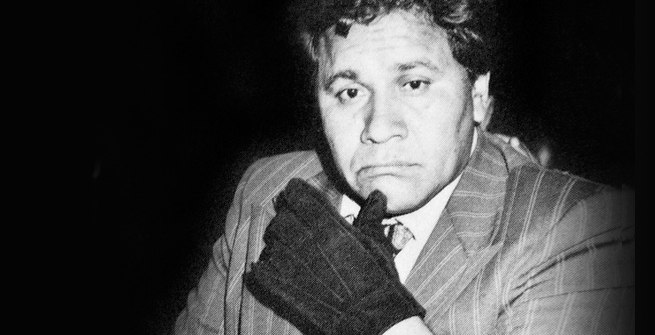

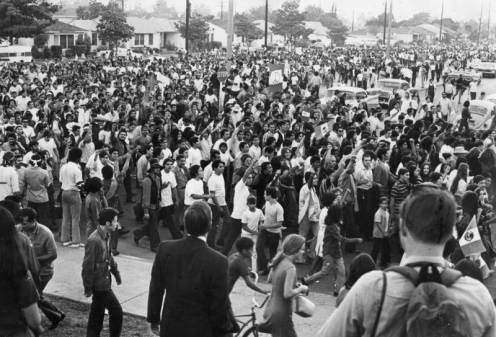
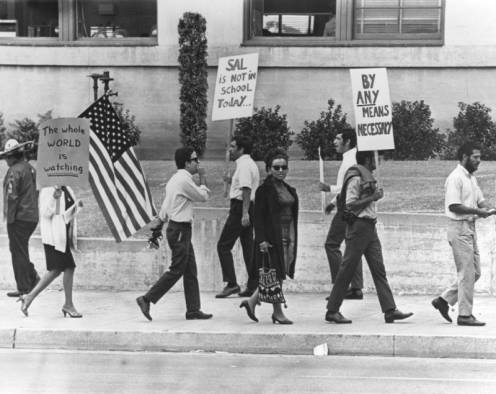
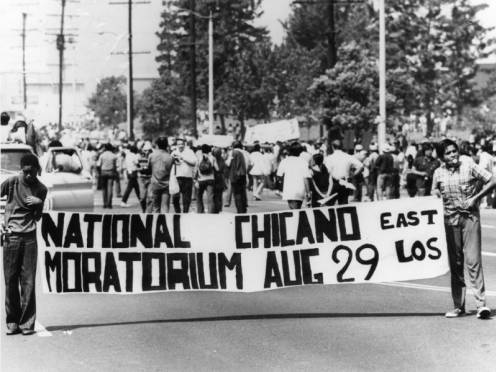
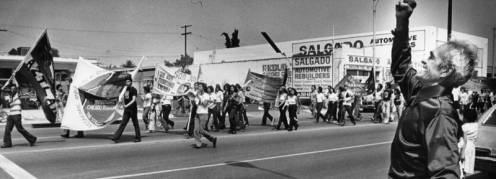
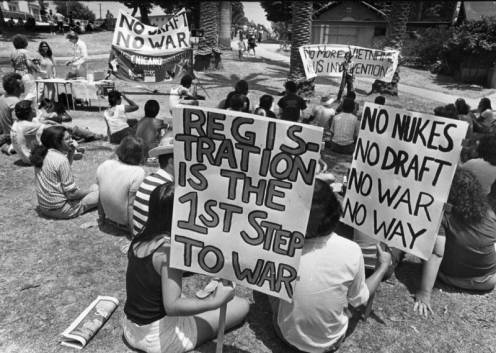
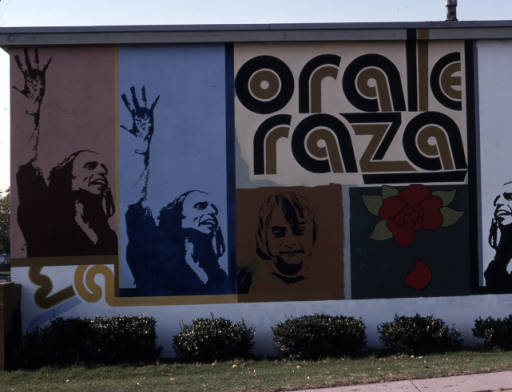










![Book cover for ...[Y] no se lo tragó la tierra = ...And the Earth did not Devour Him](https://www.lapl.org/sites/default/files/styles/staff_recommends_x97w/public/items/2021/3c4109f20914689661af9320fbdcea9e.jpg?itok=00vSK6Ua)
